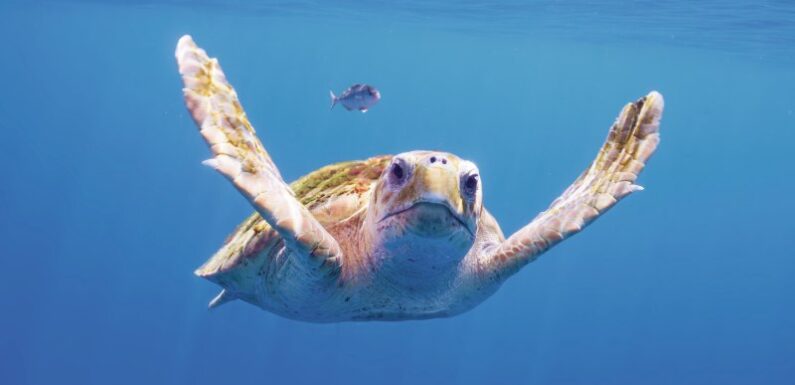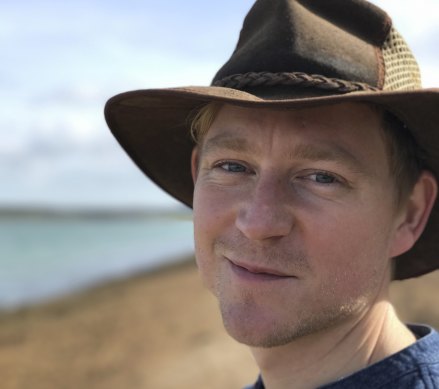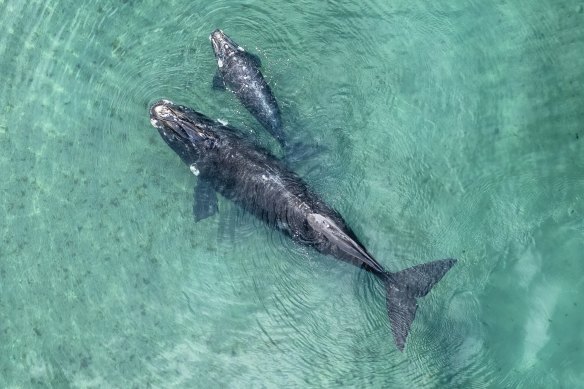
Save articles for later
Add articles to your saved list and come back to them any time.
Wildlife producer Nick Easton has twice become a father since he began work on episodes of Sir David Attenborough’s Planet Earth III. Despite technological advances since Attenborough began presenting wildlife 70 years ago, it still takes an age to produce something that can take our breath away in a matter of minutes.
“I always feel like I need to defend that time,” says Easton, who worked on the “Coasts” and “Freshwater” episodes. “But it’s a year of research and pre-production, then two summers to film, and the final year to edit. Cameras have got smaller and the quality’s got better, but rather than being happy with that, those of us in the BBC Natural History Unit are like, ‘How can we use that camera to its full capability, so we’re always pushing it to the very edge?’”
Planet Earth III producer Nick Easton says it can take more than three years to film an episode of the nature documentary.
Spectacular vision of a female southern right whale arriving in Argentina’s Peninsula Valdes to give birth took more than a year to make. The team devised a sucker system using corn starch to attach a rig to the whale, that would detach and float to the surface. The gadget was tested on the son of one of the crew, at the local swimming pool.
A sequence showing great white sharks hunting cape fur seal pups on South Africa’s Robberg Peninsula took four years. “We went back year after year, building our knowledge, understanding how to film it better,” says Easton.
Macro film equipment brings to light wonders such as the deathly ballet between the tiny sea angel and sea butterfly (“like something out of a Manga film, just remarkable”), and can capture octopuses rearing their young on thermal vents on the ocean floor. And while the director worked from his bedroom in Bristol, due to COVID restrictions, old-fashioned fieldwork with hand-held cameras still yielded incredible results, such as the underwater hunting habits of the Canadian wandering garter snake.
A whale with its calf in Planet Earth III.
“We based our whole [garter snake] shoot on an anecdote,” says Easton. “It had never been studied. In fact, we’re sharing the footage with scientists. We weren’t quite sure how it was going to play out. On about day three, I got a text from the director saying, ‘This is great!’ These snakes are doing this all the time and they’re incredibly bold. We were able to get close to them without interfering, and it begs the question, how has no one noticed this before? This was a holiday destination. But then, the natural world is such a complex place and always reveals surprises if you look carefully.”
A poignant part of “Coasts” is a return to the green turtle breeding ground of Raine Island, at the tip of the Great Barrier Reef, 67 years after Attenborough was the first to film there. The original footage is shown in the “making of” segment at the episode’s end, as the narrator reflects.
“Isn’t that an astonishing lens to use to look at a place, from 1957, just how much has changed, but ostensibly nothing has changed,” says Easton. “It looks the same, but there’s a lot going on beneath the sand.”
Conservation efforts across the world, including freshwater dolphin rescues in a city canal in Pakistan, and the rehabilitation of poaching lands in South Africa, are celebrated in the “Heroes” episode. “We’d be in trouble without these people,” says Easton. “That’s why Planet Earth III feels different. We’re all more aware just what an effect we’re having on the natural world.”
By far the toughest part of Easton’s job is showing the results to Attenborough.
“Sir David is our inspiration. His influence runs through the series,” he says. “At the end, he comes in and watches what we’ve done and, of course, that’s a nerve-wracking moment. He brings the same delight and humour and wonder that you would expect from Sir David. In the “Freshwater” episode, there’s a fish that fakes its own death in order to catch other fish. David was delighted to see that. Even he is surprised by the places, the animals and the dramas that play out.”
Planet Earth III screens at 7.30pm on Monday, December 11, on Nine, which is the owner of this masthead.
Find out the next TV, streaming series and movies to add to your must-sees. Get The Watchlist delivered every Thursday.
Most Viewed in Culture
From our partners
Source: Read Full Article

